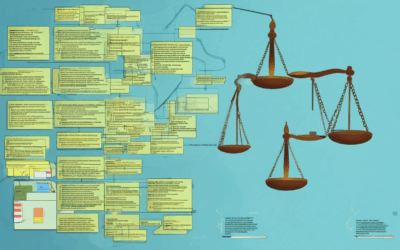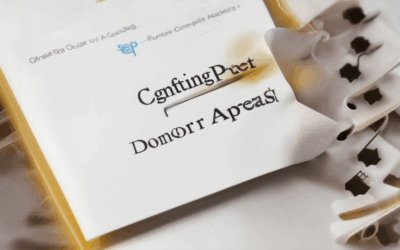In the competitive landscape of academia and research, securing funding is crucial for advancing projects and achieving meaningful outcomes. Mastering effective grant research techniques is essential for identifying the right opportunities and crafting compelling proposals that align with your objectives. Whether you’re a seasoned researcher or a newcomer to the grant-seeking process, understanding the ins and outs of grant research can make a significant difference in your success rate. This guide delves into the key strategies, methodologies, and tips needed to excel in grant research, ensuring you stay ahead in your pursuit of funding and resources.

What Are the Four Types of Research Grants?
Research grants are a vital source of funding for various organizations, particularly nonprofits and educational institutions. Understanding the different types of research grants can help you identify the best fit for your organization’s needs. Below, we outline the four primary types of research grants:
1. Government Grants
Government grants are funds provided by national or local governments to support research projects aligned with public policy goals. These grants often focus on areas like healthcare, education, environmental science, and social welfare. To apply, organizations typically need to submit proposals that align with the government’s priorities. Examples include grants from the National Institutes of Health (NIH) or the Department of Education.
2. Foundation Grants
Foundation grants come from private, philanthropic organizations that aim to support causes they care about. These grants are often awarded based on the alignment of the project with the foundation’s mission and values. Foundations may focus on specific issues like human rights, climate change, or arts education. Applying for foundation grants usually requires a detailed proposal that outlines the project’s objectives and impact.
3. Corporate Grants
Corporate grants are funds provided by businesses to support research initiatives that benefit society or align with their corporate responsibility goals. Companies often award grants in areas like sustainability, education, or health. These grants are typically applied through formal channels, and proposers must demonstrate how the research aligns with the company’s interests. Examples include grants from Microsoft or IBM.
4. Specialized Research Grants
Specialized research grants are targeted toward specific fields or disciplines. These grants may be offered by academic institutions, professional organizations, or specialized foundations. They often focus on niche areas like quantum physics, biomedical engineering, or cultural studies. Recipients must typically have expertise in the specific field and propose innovative or groundbreaking research.
By understanding these four types of research grants, you can strategically seek funding that aligns with your organization’s goals and capabilities. Whether you’re focused on public health, environmental conservation, or technological innovation, there’s likely a grant program available to support your efforts. Explore resources like the NPO Expert fundraising strategies to learn more about identifying and applying for the right grants.
What are the 5 R's of grant writing?
The Five R's of grant writing are essential principles that guide successful grant seekers in crafting compelling proposals. These principles ensure clarity, alignment, and resonance with funding objectives. Here’s a breakdown:
- Research – Conduct thorough research to identify funding opportunities aligned with your organization’s mission and goals. Utilize resources like NPO Expert to discover grants matching your cause.
- Relationships – Build strong relationships with funders, grantmakers, and partners. Attend conferences, join professional networks, and engage on platforms like LinkedIn to connect with potential supporters.
- Relevance – Clearly articulate how your project or initiative meets the funder’s priorities. Tailor your proposal to reflect the funder’s mission and values, ensuring alignment for better chances of success.
- Resilience – Embrace feedback and adaptability. Be prepared to revise proposals based on funder expectations and deadlines. Persistence is key in securing grants.
- Representation – Ensure diverse perspectives are reflected in your application, particularly in leadership roles. This demonstrates inclusivity and broad support for your initiatives.
By focusing on these five R’s, grant seekers can enhance their proposal quality, increase funding probabilities, and contribute meaningfully to impactful programs. Visit NPO Expert for more tips and resources to streamline your grant writing process.

Methodology of a Grant Proposal
The methodology section in a grant proposal is a critical component that outlines the approach, methods, and strategies the applicant will use to achieve the project’s objectives. It serves as a detailed blueprint for executing the proposed initiative, ensuring transparency and demonstrating the feasibility of the project.
Key Elements of the Methodology
- Approach and Methods: Describe the overall strategy and specific techniques or methodologies to be employed. This may include both quantitative and qualitative approaches, or a combination thereof.
- Data Collection and Analysis: Detail the process for gathering and interpreting data, whether through surveys, experiments, observations, or other means. Explain the tools and software to be used for analysis.
- Activities and Timeline: Break down the project into manageable phases or activities, including milestones and deliverables, along with a projected timeline for completion.
- Ethical Considerations: Address any ethical issues that may arise during the project, such as participant rights, confidentiality, and informed consent, especially in research-based proposals.
- Team Roles and Collaboration: Outline the roles of team members, including the leader, researchers, and any external collaborators or partners involved in the project.
The methodology should be aligned with the project’s goals, providing clear and measurable outcomes. It should also include evaluation criteria to assess the project’s success, ensuring accountability and alignment with funder expectations.

How to Write a Good Research Grant Proposal
To craft an effective research grant proposal, follow these steps:
- Define Your Research Question: Clearly articulate the central issue your research aims to address. For example, “How does social media usage affect teen mental health?”
- Conduct a Literature Review: Analyze existing studies and theories related to your topic to identify gaps and establish the rationale for your research.
- Develop Objectives: Outline specific, measurable goals aligned with your research question. Include primary, secondary, and tertiary objectives.
- Choose a Research Design: Decide whether quantitative, qualitative, or mixed-methods approaches best suit your study. Justify your choice based on the research question and available resources.
- Plan Methodology: Detail the procedures you will use to collect and analyze data. Include sample size, data collection tools, and analysis techniques.
- State Expected Outcomes: Predict the key findings you anticipate and how they will contribute to the field. Be specific and realistic.
- Budget and Timeline: Provide a detailed breakdown of expenses and a projected timeline for completing the research. Include participant compensation, materials, and travel costs if applicable.
- Conclusion: Summarize the importance of your research and its potential impact. Reiterate how the findings will address the identified gap in the literature.
- Add Appendices if Necessary: Include supporting documents like informed consent forms, survey instruments, or ethical approval letters.
Remember to keep your proposal concise, well-organized, and free of jargon. Proofread carefully to ensure clarity and professionalism. By following these guidelines, you can create a compelling proposal that captures the attention of reviewers and increases your chances of securing funding.
How to Conduct Grant Research
To effectively conduct grant research, follow these organized steps:
- Identify Potential Funders
- Utilize grant databases like GrantPage and Foundation Center .
- Explore local and national foundations through directories and online platforms.
- Contact corporate giving programs and check corporate social responsibility reports.
- Research Grant Types
- Study competitive grants requiring applications and deadlines.
- Investigate capacity-building grants for skill development and organizational strengthening.
- Look for operating support grants focused on general funding needs.
- Prepare a Strong Proposal
- Align your organization’s mission with the grantmaker’s goals in your proposal.
- Include clear objectives, timelines, and measurable outcomes.
- Gather necessary documentation like 501(c)(3) certification and financial statements.
- Build Relationships
- Network at conferences and attend grantmaker workshops.
- Participate in funding research webinars and forums.
- Connect with grant officers via LinkedIn and professional associations.
- Monitor Deadlines and Requirements
- Track key dates for grant submissions on Grants.gov and other platforms.
- Review submission guidelines carefully to meet all requirements.
- Follow Up and Learn
- Confirm application receipt with grantmakers.
- Seek feedback if applications are unsuccessful to refine future efforts.
- Document successful strategies for future reference and sharing.

How to Make Your Grant Proposal Stand Out
To make your grant proposal stand out, follow these organized steps:
- Understand the Funder’s Priorities : Research the specific funder’s mission and goals. Utilize resources that outline what different funders look for, such as education-focused foundations or health-oriented institutions. Create a mapping of funders to their interests to tailor your approach effectively.
- Craft a Clear Problem Statement : Clearly define the problem your proposal addresses. Highlight its significance and impact on stakeholders. Look at successful proposals for inspiration on how to present this information persuasively.
- Be Concise and Clarity-Focused : Avoid unnecessary jargon and ensure your proposal is both brief and impactful. Precision is key, balancing brevity with essential details.
- Tailor Your Proposal : Adjust your content to resonate with the funder’s objectives. For instance, emphasize how your project aligns with an education-focused foundation by showcasing educational benefits.
- Incorporate Storytelling : Develop a compelling narrative that connects emotionally with the reader. Relate your organization’s mission to the funder’s values, making your story relatable and engaging.
- Leverage Evidence of Past Success : Include specific achievements from previous grants, focusing on measurable outcomes like the number of people impacted or significant changes made. Quantify your results to demonstrate effectiveness.
- Collaborate with Experts : Enhance credibility by partnering with local organizations or seeking mentorship from experienced grantees. Forming alliances can strengthen your proposal’s credibility.
- Anticipate and Address Challenges : Proactively identify potential obstacles and propose solutions. Showcasing your ability to overcome challenges can significantly strengthen your proposal.
- Adhere Strictly to Guidelines : Carefully review and follow the application instructions to avoid missed deadlines or formatting errors, which can negatively impact your chances.
- Thoroughly Review and Revise : Edit your proposal multiple times to ensure quality. Consider seeking external feedback to catch errors and improve clarity.
By systematically applying these strategies, you can create a grant proposal that stands out, capturing the attention of funders and increasing your likelihood of success.





0 Comments